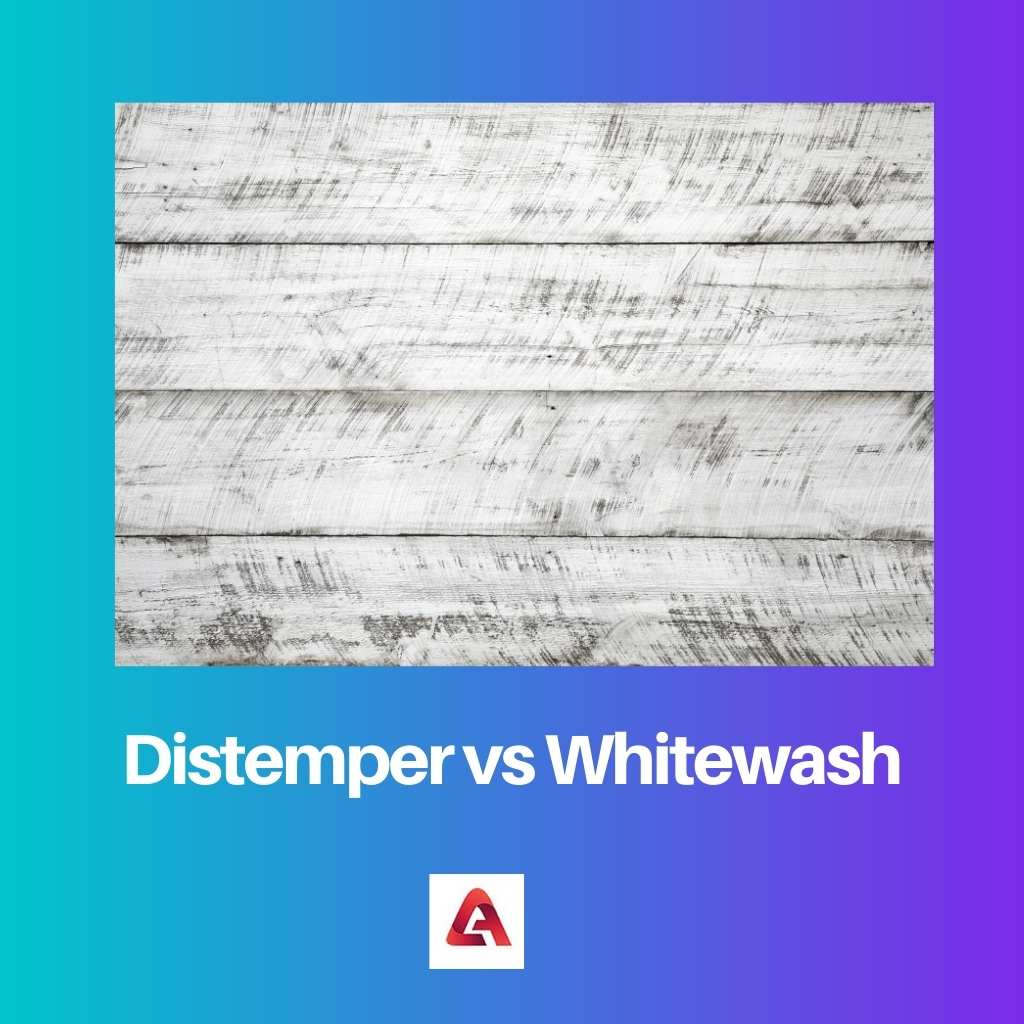People always want to make the best changes to their homes and office buildings. For that, they always go for the best, long-lasting, cost-effective, and good-looking color, the color which provides them comfort.
There are two most popular and oldest forms of paint available to date namely distemper and whitewash.
Key Takeaways
- Distemper is a water-based paint made from glue or resin, while whitewash is a slaked lime-based paint.
- Distemper provides a more uniform finish and is available in various colors, whereas whitewash is primarily white and can appear uneven.
- Whitewash is more eco-friendly and has antimicrobial properties, while distemper is less environmentally friendly due to synthetic materials.
Distemper vs Whitewash
Distemper is a type of water-based paint made from natural ingredients like chalk, lime, and casein. It is a matte finish paint used for interior walls and ceilings. Whitewash is a simple coating made by mixing lime and water. It used for painting surfaces like walls, ceilings, etc.

Distemper can be defined as paint and is one of the oldest mediums that is used for painting pictures. The history of distemper can be looked back to most initial ears of history of the humans.
A distemper is an old form of painting or whitewashing.
Whitewash can be defined as a hybrid mixture of powdered chalk or lime, salt, and water. This mixture is widely utilized for making the walls and ceilings white.
Whitewash differs from other conventional paints; it can be easily manufactured even at home. Whitewashing is one the oldest technique of painting.
Comparison Table
| Parameters of Comparison | Distemper | Whitewash |
|---|---|---|
| Durability | Distemper has less durability period as compared to whitewash. | Whitewash has more durability period than distemper. |
| Waterproof | Distemper is waterproof. | Whitewash can be made waterproof if added lime. |
| First Used/Mentioned | Distemper has been used since the times of encountering Egyptians. | The first use of the term whitewash was made in 1591. |
| Used in | Distemper can majorly be used inside houses and buildings. | While whitewash can either be used inside the house or outside the house. |
| Types | Acrylic distemper, synthetic distemper, etc. | Does not have any types. |
What is Distemper?
It is made up of the following materials chalk, water, and pigment and is mixed with glue, which is animal-based, such as egg or the sticky traits of casein, a resin that originates from solidified milk.
One of the primary drawbacks of distemper paint can be that it does not last long.
Due to this reason, distemper paint is not used for expensive projects rather is used for inexpensive or temporary projects.
According to history, distemper has always been one of the most prominent and popular paints which were used in interior projects. Distemper has always been widely used for the decoration of houses.
It can be marked effortlessly. As distemper paint is not waterproof thus it is majorly used for internal painting. In the regions or areas, where it rains rarely, distemper paint can easily be used on the outside of the houses.
Despite this drawback, distemper paint has always been popular as it is inexpensive and provides great coverage of paint in just a few coats.
Distemper paint dries up rapidly and any stain on the paint can be easily removed with some wet cloth or rug. The Asian painting heritage makes wide use of distemper paint.
In India, distemper paint continues to be one of the most economical paints. Distemper paint is extensively used in rental properties as a new coating of paint is needed there every year.
What is Whitewash?
Whitewash is one of the most efficient paints. It doesn’t peel off as other traditional paints might do.
Whitewash always makes it up to the appearance and the expectations of people to provide the best finishing. Whitewash requires the least maintenance.
According to the experts, whitewash may even last up to decades.
Whitewash has a natural behavior of repealing the insects, so if you’re planning on whitewashing your house then you would not need to worry about insects laying eggs at your place. Whitewash can even be used on stones or bricks.
Whitewash proves to be efficient in protecting your bricks or stones from poor weather and pests alike. You would not have to be tense about the formation of fracture as it does not steal moisture.
Whitewash is one of the most durable paints that won’t even be affected by the storms and thunders as other paints do. Whitewash is entirely toxic chemicals-free paint.
It does not smell bad. Whitewash is majorly used to get rid of sunburn, throwback the sunlight which lays on the house or a building, etc.
Whitewashing can also be used for decorating purposes as it provides vintage looks. Whitewash is considered to be one of the best alternatives to painting.
If you want whitewash to look more vibrant then you may add dye to it. Whitewash can also be used as odor-repellent.

Main Differences Between Distemper and Whitewash
- Distemper can last up to three to five years while whitewash can last up to 20 to 30 years.
- Distemper has a distinctive smell while whitewash has no smell.
- Distemper provides a modern look while whitewash provides a vintage look.
- Distemper does not provide the facility of getting rid of insects as Whitewash does.
- Distemper is majorly used for decoration for houses and buildings while whitewash is not used for such purpose.

